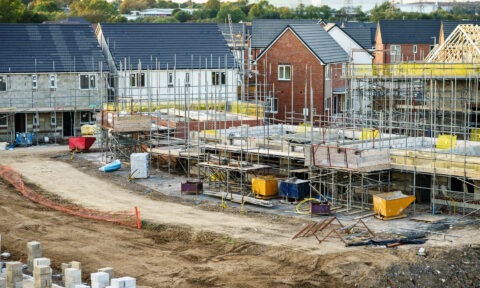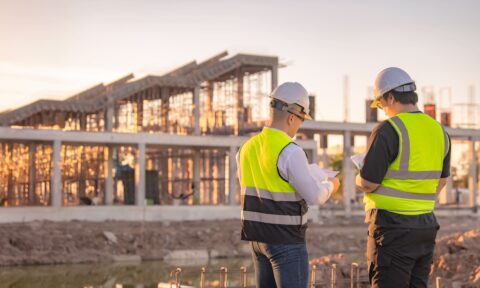Design of Wind Turbines
- Course focuses on wind turbine technology, design, and future trends.
- Target audience includes engineers and researchers in wind energy.
- Innovative course structure balances theory and practice.
- Lectures cover topics like energy extraction, rotor design, and offshore technology.
- Speakers are experts in wind energy with extensive experience.
Overview
Wind Turbine Design Training is a course aimed at individuals involved in various aspects of wind energy who seek a deeper understanding of turbine technology. The course offers a balance of theory and practice, covering topics such as wind technology development, energy extraction principles, electrical systems integration, and future technology trends. Engineers and researchers in wind farm development, financing, management, and installation will benefit from attending. The course spans two days and includes lectures by experts in the field.
Who should attend
Engineers, Researchers
Course Content
About the Course
This course is directed especially at people involved in wide ranging aspects of wind energy, who would like more background and understanding of turbine technology. It is therefore not much mathematical or highly analytical although it may afford some fresh insights even for experienced wind engineers.
The course is innovative in both content & structure with a balance of theory & practice. The course will address wide aspects of the technology including the general logic of design in the context of cost of energy considering small and large turbines. It will trace the evolution of modern wind technology from back-yard activities in the 1970’s to the present state with corporate industrial development of large scale commercial projects. Likely future developments and some more blue-sky possibilities will also be reviewed.
Who Should Attend
Engineers and researchers involved in all the activities around wind farm development on-shore and offshore, including financing, management, project management, safety, grid connection, logistics, installation and commissioning etc., will benefit from attending this course.
PROGRAMME
Day 1
09.00 – 10.30 Lecture 1: Wind technology development – from backyards to national grids – Peter Jamieson
10.30 – 11.00 Break
11.00 – 12.30 Lecture 2: Principles of energy extraction, turbine design basics and system solutions -Peter Jamieson
12.30 -13.30 Lunch
13.30 – 15.00 Lecture 3: Electrical systems and integration of wind power – Alasdair McDonald
15.00 – 15.30 Break
15.30 – 17.00 Lecture 4: Design in relation to cost of energy – Peter Jamieson
Tuesday 8 September 2015
09.00 – 10.30 Lecture 5: What drives design? Wind turbine loads and environmental conditions – Peter Jamieson
10.30 – 11.00 Break
11.00 – 12.30 Lecture 6: Rotor design and manufacture – Mark Hancock
12.30 – 13.30 Lunch
13.30 – 15.00 Lecture 7: Upscaling of wind turbines and offshore design – Peter Jamieson
15.00 – 15.30 Break
15.30 – 17.00 Lecture 8: Innovative systems and future technology trends – Peter Jamieson
Content of Lectures
Lecture 1: Wind technology development – from backyards to national grids.
The evolution of modern wind technology from 1980 to present is explained and the basic challenges for design of a modern wind turbine are addressed.
Lecture 2:Principles of energy extraction, turbine design basics and system solutions.
The basics of extracting energy from wind power are explained and the issues that determine blade shape, rotor speed, power control etc. are outlined. The motives for different rotor and drive train solutions are explained
Lecture 3:Electrical systems and integration of wind power.
Operation of electrical networks, active and reactive power, grid integration and basic type of electrical machines used in wind power systems are explained.
Lecture 4:Design in relation to cost of energy
Efficiency, reliability, maintenance and capital cost all impact on cost of energy. The relative importance of system components in relation to cost of energy is explained. The issue of power rating in relation to rotor diameter is explored and important differences between onshore and offshore design are highlighted. It is clarified that reducing cost of energy does not simply equate to cost reduction of system components.
Lecture 5:What drives design? Wind turbine loads and environmental conditions.
The development of load specification and of standards for wind turbine design is explained and also the challenge to optimise design of a system where most of the value (energy) is accrued in wind speeds below rated wind speed (lowest wind speed at which maximum steady power output is developed) while most design driving loads (costs) are associated with operation around and above rated wind speeds including storm conditions where power production is suspended.
Lecture 6:Rotor design and manufacture
The evolution in materials, development of manufacturing methods, structural design of rotor blades, testing of blades and latest trends in rotor blade design and manufacture are all discussed.
Lecture 7:Upscaling of wind turbines and offshore design.
The trends in upscaling of wind turbines and the limiting factors are explored as a foundation in understanding the design and development of offshore wind technology.
Lecture 8:Innovative systems and future technology trends.
The great diversity in wind turbine design that exists is contrasted with the predominant commercial choices. Emergent future wind technologies including offshore floating systems and airborne systems are reviewed.
CV’S OF LECTURERS:
Alasdair McDonald – MEng (Hons) First Class Degree in Integrated Electrical and Mechanical Engineering.
PhD on “Structural analysis of low speed, high torque electrical generators for direct-drive renewable energy converters”.at Edinburgh University 2008.
AMcD was a part time Consultant Engineer to Harakosan Europe based in Lelystad, Netherlands involved in the development of permanent magnet generator for 2+MW wind turbine and Research Associate, Institute for Energy Systems, University of Edinburgh.
2008-2009. From 2009-2012 AMcD was Chief Engineer & Director, NGenTec Ltd developing an innovative generator for wind turbines. Since then AMcD is a lecturer in the Wind Energy Systems CDT of the University of Strathclyde. He is presently engaged in the INNWIND EU project and in supervising PhD students working with Vestas and SSE.
Mark Hancock – MA Cantab in Engineering Science, MSc in Energy Resource Management, MIMechE
Following 8 years with the Central Electricity Generating Board on conventional power station design & construction, MH has been working on renewables; two years on wave energy and 33 years on wind turbine blades. Until 2014, MH was Chief Engineer on Blades Technology for Vestas, and before with NEG Micon with which it merged in 2005. The role was threefold: Technical Vision, Quality (QA & what constitutes quality) and Mentoring (competence development).
MH is presently an Engineering Specialist with Blade Dynamics in Southampton exploring some different approaches to blade manufacture and construction. Core enthusiasms are engineering design and its application to make a positive contribution to life
Peter Jamieson– BSc (pure science) Glasgow University
PJ has been a wind energy professional since 1980, responsible for wind turbine development and much involved in the design of the James Howden wind turbines for a 26 MW wind farm erected in California in 1985. As senior principal engineer in Garrad Hassan from 1991 – 2013 he founded their Scottish office and Special Projects Department. and since October 2009 he has been employed as Senior Technology Adviser in the Wind Energy Centre for Doctoral Training of Strathclyde University. He is author of over 40 papers and inventor of 6 patents relating to wind technology. PJ has long been involved in technology evaluations, in the context of company acquisitions, development of new large turbines of commercial manufacturers and also in evaluating innovations of small start-up companies over an international client base. His book “Innovation in Wind Turbine Design” (Wiley, 2011) reflects a career involvement in wind technology evaluation and development.
Duration:2 Days
Cost:£650 + VAT
Design of Wind Turbine training Aberdeen, Glasgow, Edinburgh, Dunfermline and other sites throughout the UK including onsite closed company courses are available.
Wind Turbine training Saudi Arabia, Bahrain, Kuwait, Qatar, Abu Dhabi, Dubai, India, Ghana and Nigeria is also available



